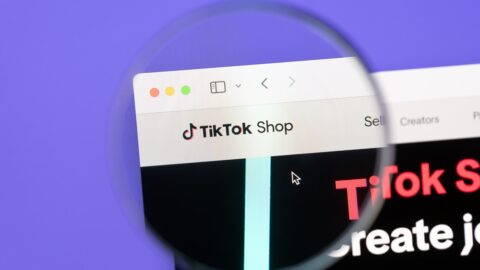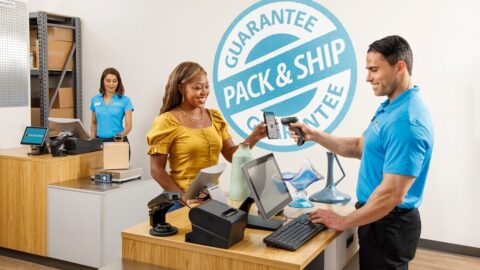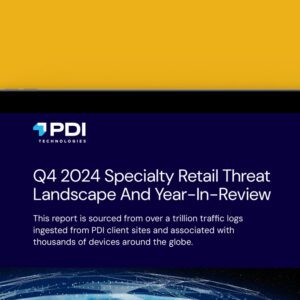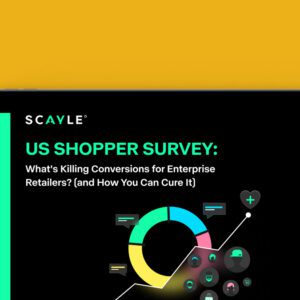Shoppers are more comfortable tapping into their smartphones in-store and at home to interact with brands, comparison shop and make purchases, according to new research from Oracle. As a result, consumer response to mobile marketing initiatives such as SMS, geo-location features and applications is growing more positive.
The second installment of the survey titled “Opportunity Calling: The Future of Mobile Communications – Take 2” gathered insights from more than 3,000 mobile phone subscribers worldwide. Results covered key areas including: new mobile behaviors and perceptions; adoption of new mobile technologies, such as location-based applications; and consumer opinion on mobile payment capabilities.
New features and capabilities of smartphone technology have caused a spike in data usage, according to the survey. Approximately half (47%) of mobile customers say their data use has increased in the past 12 months. This uptick is caused by consumers using their phones to watch movies via Netflix, take pictures/videos and download apps, along with standard calling and texting, according to Dan Ford, VP of Product Marketing for Oracle Communications.
Advertisement
“We’re seeing a significant increase in consumers buying smartphones versus feature phones,” Ford said. “These devices are made to deliver a more media-rich entertainment experience in addition to standard features. More users, for example, are taking advantage of Netflix on their smartphones. That form of usage, along with other peer-to-peer practices, is taking up a large amount of data usage.”
Oracle’s findings also reveal mobile’s influence on purchasing behaviors and decisions. More consumers are using their phones to comparison shop (30%), reach customer reviews (24%), and scan QR codes in ads or articles (14%) to receive more information on products and sales.
Multimedia features available on smartphones allow retailers to develop applications and further engage with consumers. To that end, consumer downloads of free applications experienced a 13% year-over-year growth, from 42% in 2010 to 55% in 2011. Although more shoppers are using apps to translate in-store experiences to their mobile screen, retailers must focus on more influential channels that are easier to roll out, David Dorf, Senior Director of Technology Strategy for Oracle Retail, told Retail TouchPoints.
“I think apps are temporary,” Dorf said. “The rich, multimedia experience with applications is great and that’s why consumers use them. But from a retailer perspective it’s a pain to provide that on different platforms, such as Apple iOS, Android and Windows. I think in the long-term, HTML5 will be the top resource because it allows retailers to create an application that works across all platforms. It provides that rich experience right from the browser.” Dorf advises that retailers leverage short message service (SMS) to gain shopper attention and send digital coupons, and release an app as a vehicle to deliver more in-depth content.
Geo-location initiatives also are coming to the forefront as consumers become more willing to share their location with outside sources. As many as 45% of consumers indicated that they have voluntarily provided their location to apps, up from 33% in 2010. While location-based applications such as shopkick and foursquare create incentives by promising coupons and discounts in return for frequent store visits, Dorf noted that push notifications sent with geo-fencing are more efficient. “Geo-fencing allows retailers to draw perimeters so they can send text messages to anyone that comes within a certain area of the store. It’s a lot more exact [than check-in apps] to ensure that shoppers really are within a certain area of a store or around competitor stores.”
Education Vital To Mobile Payment Success
Currently, 21% of respondents say they are “very comfortable” making a purchase with their mobile phone instead of using cash or credit card. However, security is still a primary issue, with 68% of consumers indicating that they are skeptical regarding the safety of information being stored or transmitted via mobile. With the recent release of Google Wallet and other near field communication (NFC) technologies, retailers including Walgreens have focused on educating consumers on the benefits of mobile payment technology. This is vital for successful implementation and better consumer reactions, according to Dorf.
“People are concerned about security because they don’t want retailers to just pick-pocket them,” Dorf said. “But once consumers understand the value that they’re getting from NFC, some of these concerns will wane.” However, offering payment alone is not enough to optimize adoption, he added. “The difference between tapping a phone and swiping a credit card is not significant. The real value is combining payments with digital coupons and loyalty. When this comes to fruition and consumers have easy access to all of these features, they will get very excited. Until then, Google, Isis and others will have an uphill battle to teach consumers.”
By integrating mobile initiatives with the in-store experience, retailers can optimize quality of customer service, Dorf noted. For example, retailers can leverage mobile technology as their “little black book” to capture customer information, and analyze browsing and buying behaviors. This technique will help store associate recommend the right products, and encourage cross-sells and upsells to shoppers on the store floor. “Brick-and-mortar is still alive and well,” he added. “Mobile is actually going to increase the consumer experience while they’re shopping, so retailers need to embrace it.”













